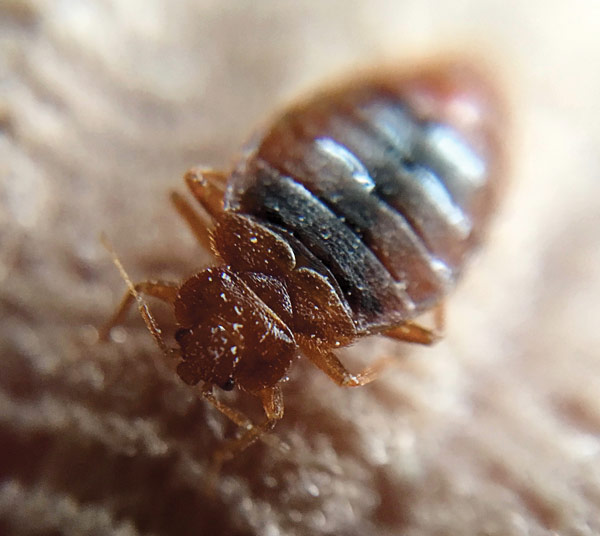A Promising New Pesticide for Bed Bugs
 |
|
Close-up of an adult bed bug. Photo: Susannah Krysko. |
By Susannah Krysko, M.S., Northeastern IPM Center
Recent research from the Department of Entomology at Rutgers, The State University of New Jersey, has revealed a long-awaited new pesticide for treating bed bug (Cimex lectularius L.) infestations shows promise. Since their resurgence across the country in the early 2000s, bed bugs have posed significant challenges to the pest control industry due to their secretive behavior and growing resistance to insecticides. In some cases, bed bug populations in multi-unit housing have been repeatedly exposed to the same chemicals for over a decade. Currently, registered chemical pesticides for bed bugs have limited effectiveness, leaving pest management professionals with few options, especially for resistant populations.
According to the study, the insecticide isocycloseram, which belongs to the isoxazoline class, exhibits excellent efficacy against bed bugs. Researchers tested two formulations (400 SC and 45 SC), both of which proved highly effective, with the 45 SC performing slightly better. They resulted in faster mortality rates among resistant populations and outperformed five commercially available insecticides typically used for bed bug treatments. Notably, the 45 SC formulation, when applied at a rate of 0.1 percent, was the only insecticide in the experiment that achieved 100 percent mortality after it aged on substrates for 30 days.
While this development marks a significant advancement in bed bug management, it should not be viewed as a silver bullet solution. Other studies suggest that bed bugs in the field may develop reduced sensitivity to isocycloseram due to regular pesticide exposure, which can trigger the expression of various detoxification genes. Therefore, it is crucial to adhere to the basic principles of integrated pest management (IPM) even when using this product. This includes rotating among different classes of insecticides and incorporating non-chemical methods to help delay the onset of insecticide resistance.
According to researchers, insecticide treatment will likely remain the primary method for controlling bed bugs in the future, due to the low cost and ease of application compared to non-chemical methods. The development of new insecticides and advanced formulations is essential. The high efficacy of isocycloseram demonstrated in this study indicates that it could significantly enhance future bed bug management, if and when it becomes commercially available.
Further Reading
Pan, X.; Sarker, S; Wang, C. Laboratory Evaluation of a Novel Insecticide, Isocycloseram, Against the Common Bed Bug (Cimex lectularius L.) (Hemiptera: Cimicidae). Insects. 2025; 16(2):200. doi.org/10.3390/insects16020200
